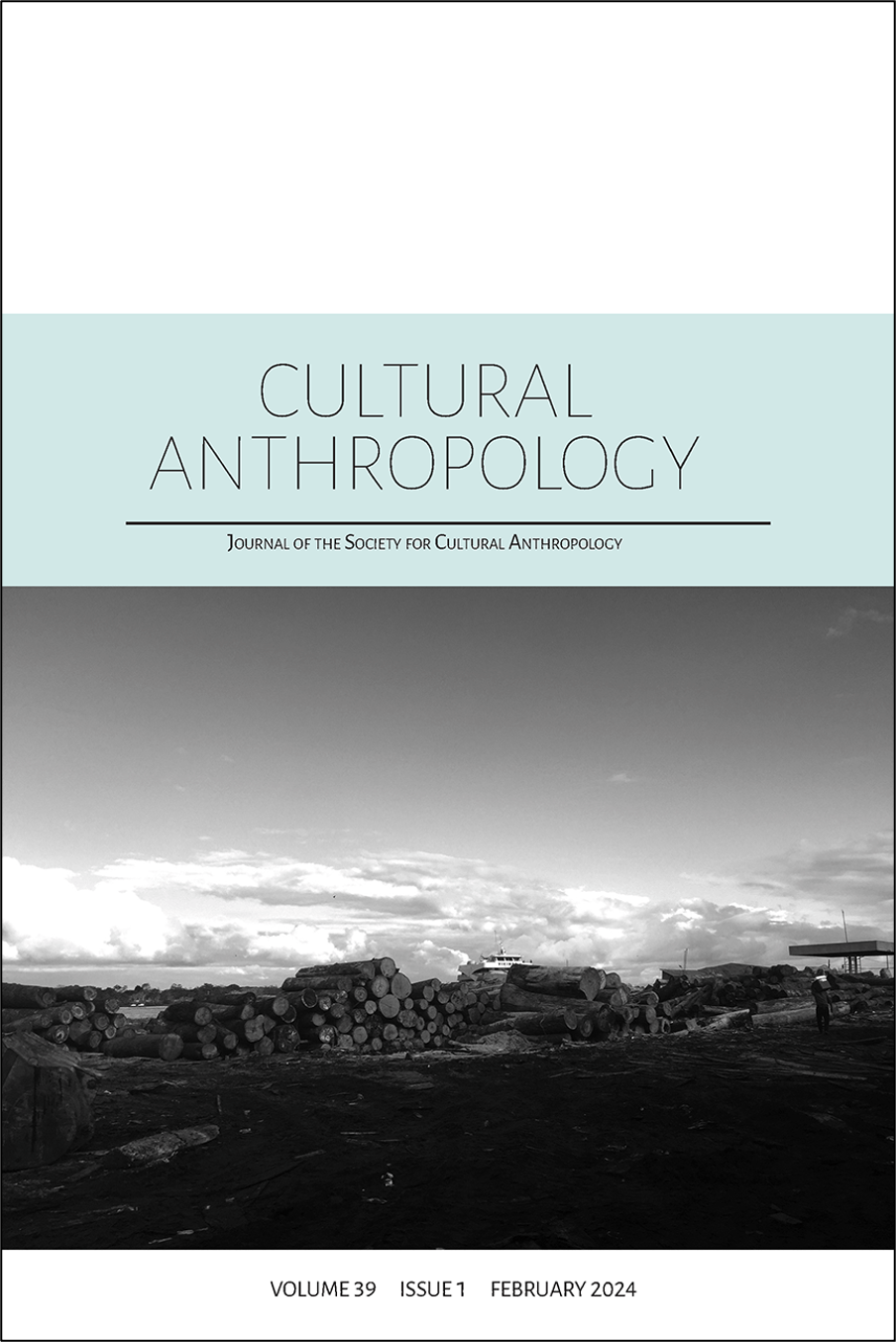
We present six original papers in this issue as well as the inaugural guest commentary.
When the Society for Cultural Anthropology selected our distributed, international editorial collective to lead Cultural Anthropology, they did so in part to support our commitment to opening channels of this crucial platform of our discipline beyond the scope of privileged, endowed higher educational institutions in the United States. As one step of this process, in this issue we provide space to the Choctaw Nation of Oklahoma to describe their work since the passage of the Native American Graves Protection and Repatriation Act (NAGPRA) in 1990. As Deanna L. Byrd, the NAGPRA Liaison-Coordinator and Research and Outreach Program Manager of the Choctaw Nation of Oklahoma, and Ian Thompson, the Tribal Historic Preservation Officer of the Choctaw Nation of Oklahoma, writes, since that time, “Native American communities gained a measure of say in how ancestral burials are treated on federal lands. The law also established a mechanism to help Native American, Alaskan, and Native Hawaiian communities have open dialogue with institutions across the country about the return of their ancestors, funerary objects, sacred objects, and objects of cultural patrimony.”
In dialogue with critical disability studies, Eliza Williamson zooms in the everyday practices of Bahian mothers with children diagnosed with Congenital Zika Syndrome. Mothers, she shows, assert their children’s personhood by refusing their medically diagnosed lack of futurity through what she defines as habilitative care: “a bodymind potentializing set of practices” involving a myriad of “substances, technologies and techniques understood to encourage maximum potential development of embodied abilities in young disabled children.”
Leniqueca Welcome delves into unaccounted forms of violence on and in those “who occupy the category of poor black woman in Trinidad” to develop a “capacious, relational and historically layered” approach to entangled forms of gender-based violence and life searching. In so doing, a sharp critique of the masculinist state and legacies of colonial extraction emerges.
By spending time with loggers, timber industrialists, and state technocrats across Peru’s Amazonian region of Loreto, Eduardo Romero Dianderas tracks technical maneuvers and political controversies around timber volumetric calculation. Far from a mathematical abstraction, his ethnography invites us to think that the practice of volume-making—scaling, standardizing, and accounting for timber—is a contact zone in which “power, history and bodily experience” saturate a crucial operation for global environmental governance.
Focusing on demonstrations held outside Yangon, Myanmar, in favor of a plan to build a New Yangon City, Courtney Wittekind’s article intervenes in the binaries of “truth” versus “falsity” and “genuine” versus “fake” to advance an anthropological theorization of demonstration, speculation, and spectacle.
For centuries, the Curse of Ham, the originary anti-Black myth of the Abrahamic faiths, functioned as the foundational and legitimating narrative of white supremacist ideology across the African continent. To Justin Haruyama’s disconcertment, this was also the narrative invoked by some of his Zambian informants to explain the predicament of Black people today. In his paper for this issue, Haruyama stages a conversation with Black liberation theology to suggest that these narratives articulated, however, a profound refutation of liberal egalitarianism and, from the situated premises of a transnational Zambian perspective, put forward an alternative vision for a decolonial abolitionist anthropology.
In his article, Ramy Aly interrogates the anthropology of ethics and revolution in dialogue with a phenomenological and situated account of the 2011 January Egyptian Revolution. He does it through the experiences and narratives of those that were too young to take part in street protests and political movements but for whom the revolution still takes precedent in everyday practices of self-making.
Cover and table-of-contents image by Eduardo Romero Dianderas.
